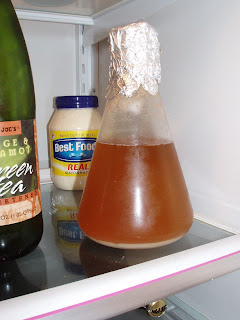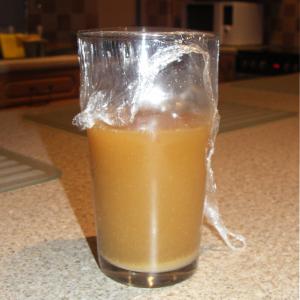Hey Gang,
So I decided to make a starter for the first time with WL300 for a Dunkle I was going to get started today. Yesterday at about 6pm I pulled my yeast from the refrigerator with the intent to make the starter at about midnight. I noticed at this time that I only had a little over 1/4 cups of light DME so instead of doing 4 cups water to 1/2 cup DME I did 2 cups water to 1/4 cups DME. Boiled for about 10 mins then mixed in the DME. I crash cooled it down to 70 degrees and then dumped it in jug and shook it good to aerate. Shook the yeast up really good and tossed that in the jug as well. Gave it a good shake and put an airlock on it. Put it in the corner of the kitchen which is about 65 - 68 degrees.
I'm checking on it now and it seems to not be doing anything however every 30 seconds or so I do have a bubbles.
Should I let it sit or give it a shake? How do I know if it's usable? I might not brew tonight or if I have time run and get a packet of dry yeast just so I can get a batch going.
So I decided to make a starter for the first time with WL300 for a Dunkle I was going to get started today. Yesterday at about 6pm I pulled my yeast from the refrigerator with the intent to make the starter at about midnight. I noticed at this time that I only had a little over 1/4 cups of light DME so instead of doing 4 cups water to 1/2 cup DME I did 2 cups water to 1/4 cups DME. Boiled for about 10 mins then mixed in the DME. I crash cooled it down to 70 degrees and then dumped it in jug and shook it good to aerate. Shook the yeast up really good and tossed that in the jug as well. Gave it a good shake and put an airlock on it. Put it in the corner of the kitchen which is about 65 - 68 degrees.
I'm checking on it now and it seems to not be doing anything however every 30 seconds or so I do have a bubbles.
Should I let it sit or give it a shake? How do I know if it's usable? I might not brew tonight or if I have time run and get a packet of dry yeast just so I can get a batch going.





